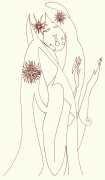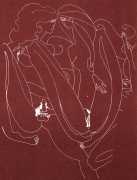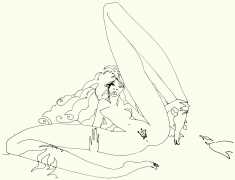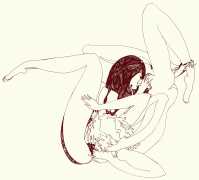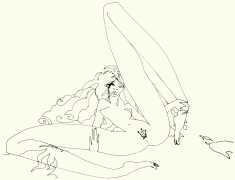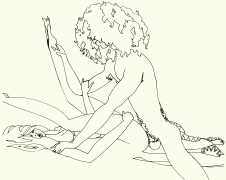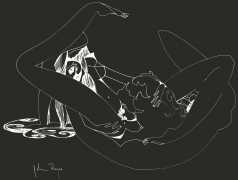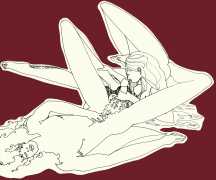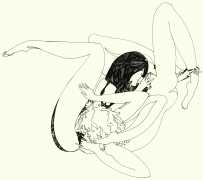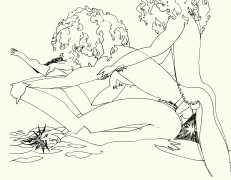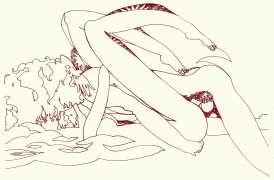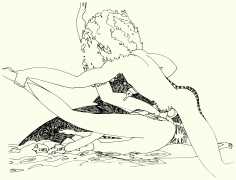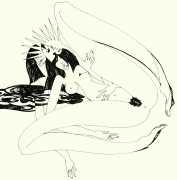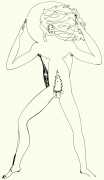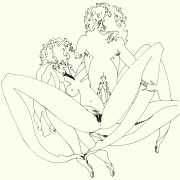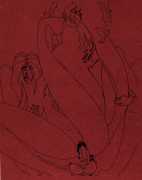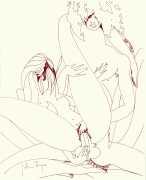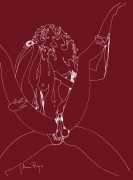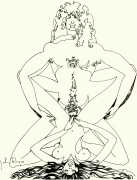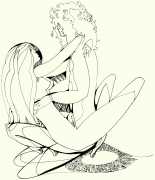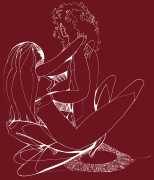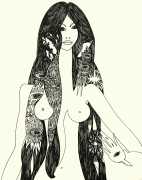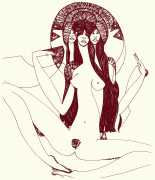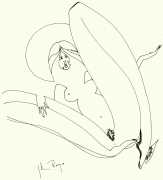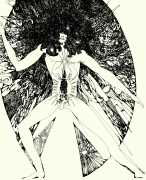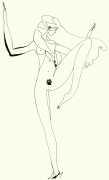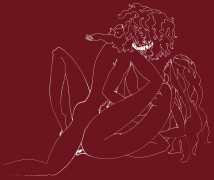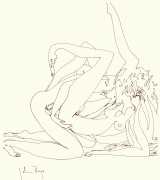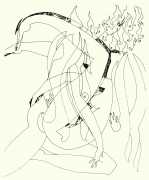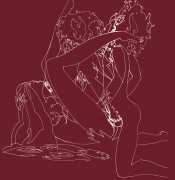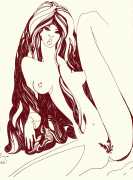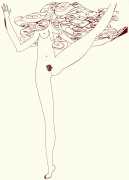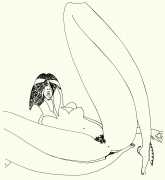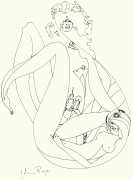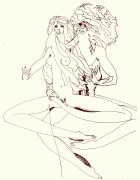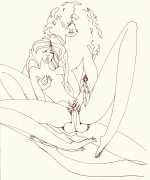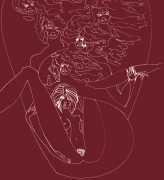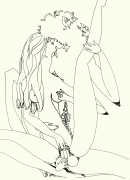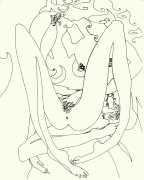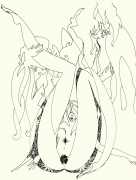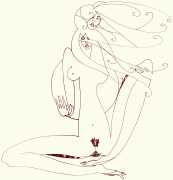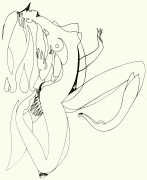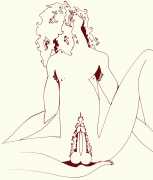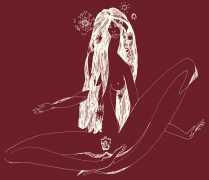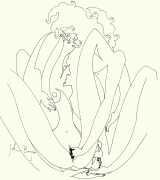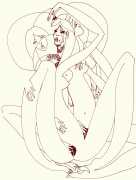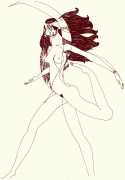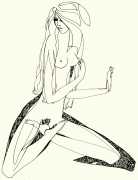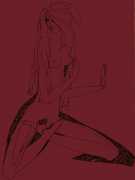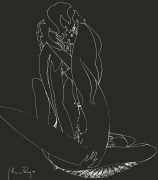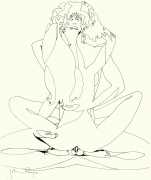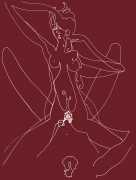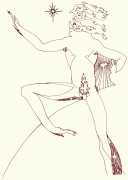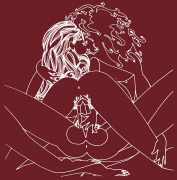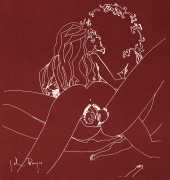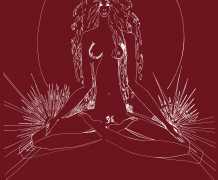 John Boyce met the French author and diarist Anaïs Nin in 1969 at a private showing of an experimental film he had made with fellow director Ivor Flom; she was impressed with his approach to art, and seven years later suggested a collaboration on a book of illustrations that would complement selected erotic passages from her novels and diaries. The joint project that followed seemed a natural synthesis of approach from artists who shared a similar aim, to express the inner workings of the unconscious. After a year of reading Anaïs Nin’s complete novels and diaries, Boyce selected passages and drew more than eighty drawings in six sequences of ‘Love Stories’. When it was published, the New York Book Review was highly enthusiastic, writing ‘Rarely has the human imagination produced a work that was more exquisitely erotic’. Aphrodisiac went on to be published in France, Britain and Spain. For Boyce, the illustrations were the result of a fifteen-year pursuit of line drawing as a point of departure for this very personal artistic statement.
John Boyce met the French author and diarist Anaïs Nin in 1969 at a private showing of an experimental film he had made with fellow director Ivor Flom; she was impressed with his approach to art, and seven years later suggested a collaboration on a book of illustrations that would complement selected erotic passages from her novels and diaries. The joint project that followed seemed a natural synthesis of approach from artists who shared a similar aim, to express the inner workings of the unconscious. After a year of reading Anaïs Nin’s complete novels and diaries, Boyce selected passages and drew more than eighty drawings in six sequences of ‘Love Stories’. When it was published, the New York Book Review was highly enthusiastic, writing ‘Rarely has the human imagination produced a work that was more exquisitely erotic’. Aphrodisiac went on to be published in France, Britain and Spain. For Boyce, the illustrations were the result of a fifteen-year pursuit of line drawing as a point of departure for this very personal artistic statement.

Anaïs Nin, then at the peak of her career, wrote a short introduction to the book, worth quoting in full for its over-the-top poetic effect: ‘The work of John Boyce is quite unique. There was a time when erotic drawings and aesthetic beauty were combined, but in our time erotic drawings and vulgarity are inseparable. John Boyce has created a new contemporary style in which the erotic quality is powerful but allied to a sensuous beauty of line, a fusion of the faunesque, plant, stars, illuminations which add to the erotic experience. At times one is enslaved by the allure of magnetic undulations of hair, at times the sinuous quality of an arm or leg seems to envelope one like tendrils of a climbing plant. Bodies are on the verge of becoming iridescent flesh, faces contain the mystery and enigma of myth, the interlockings and interplays of passion arouse a sense of the delights of fusions. Some figures dance their way into the love positions, some become fluid like the ocean itself, the sense of absolute touch is ever present, and achieves a suggestion of ecstasy brought on by intricate interlacings of supple, undulating bodies seeking the maximum in intermingling. This he achieves not only a visual clarity of erotic postures but the accompanying delights of mingling, intermingling and fusion. All this is done with a supreme elegance of line which delights the senses.’
Aphrodisiac was published by Crown in the USA, followed by an international reprint by Quartet two years later. It is printed throughout in black and maroon, one of the must-have colours – olive green and slate grey being the others – of the late 1970s, and the book design is very advanced for the period.
John Boyce’s illustrations are very much of their time, with their frizzy hairstyles, pouty lips and Buddha poses. They are also remarkably sexually explicit for a mainstream book published almost half a century ago; it was almost certainly the collaboration with the highly-saleable Nin that made it relatively acceptable.


